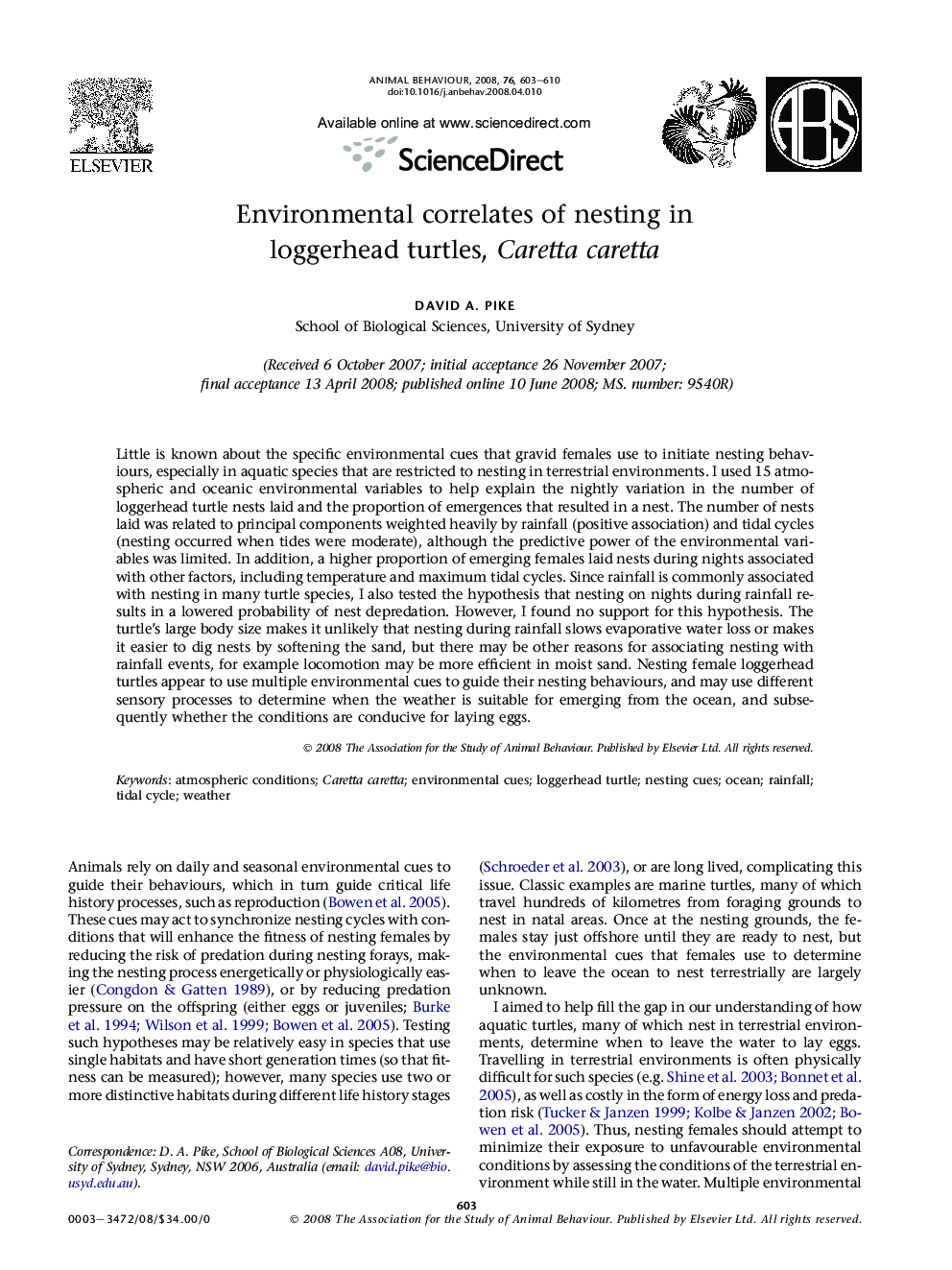| کد مقاله | کد نشریه | سال انتشار | مقاله انگلیسی | نسخه تمام متن |
|---|---|---|---|---|
| 2418806 | 1104358 | 2008 | 8 صفحه PDF | دانلود رایگان |

Little is known about the specific environmental cues that gravid females use to initiate nesting behaviours, especially in aquatic species that are restricted to nesting in terrestrial environments. I used 15 atmospheric and oceanic environmental variables to help explain the nightly variation in the number of loggerhead turtle nests laid and the proportion of emergences that resulted in a nest. The number of nests laid was related to principal components weighted heavily by rainfall (positive association) and tidal cycles (nesting occurred when tides were moderate), although the predictive power of the environmental variables was limited. In addition, a higher proportion of emerging females laid nests during nights associated with other factors, including temperature and maximum tidal cycles. Since rainfall is commonly associated with nesting in many turtle species, I also tested the hypothesis that nesting on nights during rainfall results in a lowered probability of nest depredation. However, I found no support for this hypothesis. The turtle's large body size makes it unlikely that nesting during rainfall slows evaporative water loss or makes it easier to dig nests by softening the sand, but there may be other reasons for associating nesting with rainfall events, for example locomotion may be more efficient in moist sand. Nesting female loggerhead turtles appear to use multiple environmental cues to guide their nesting behaviours, and may use different sensory processes to determine when the weather is suitable for emerging from the ocean, and subsequently whether the conditions are conducive for laying eggs.
Journal: Animal Behaviour - Volume 76, Issue 3, September 2008, Pages 603–610